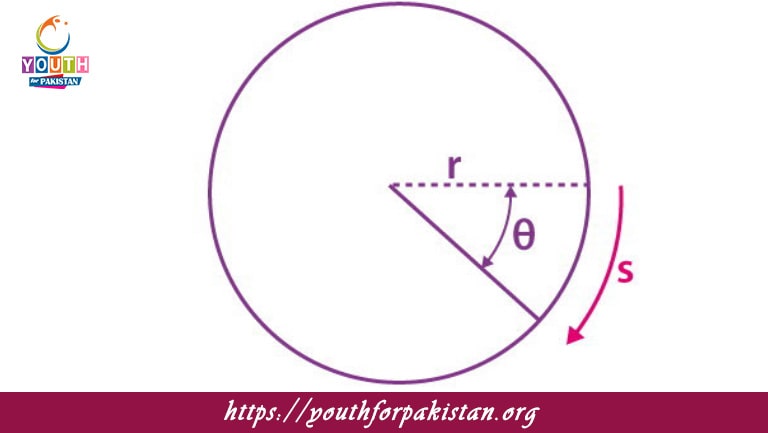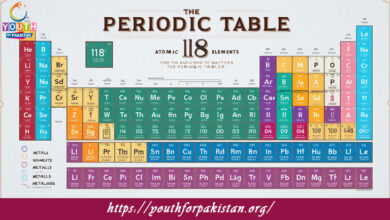Relation Between Linear And Angular Displacements MDCAT MCQs

Welcome to the Relation Between Linear And Angular Displacements MDCAT MCQs with Answers. In this post, we have shared Relation Between Linear And Angular Displacements Multiple Choice Questions and Answers for PMC MDCAT 2024. Each question in MDCAT Physics offers a chance to enhance your knowledge regarding Relation Between Linear And Angular Displacements MCQs in this MDCAT Online Test.
Relation Between Linear And Angular Displacements MDCAT MCQs Test Preparations
If the radius of a rotating wheel is doubled, the linear displacement for a given angular displacement will:
a) Double
b) Quadruple
c) Remain the same
d) Halve
The unit of angular displacement
θ is:
a) meters
b) radians
c) m/s
d) m/s²
In a rotating object, if the angular displacement is increased and the radius remains constant, the linear displacement will:
a) Increase
b) Decrease
c) Remain the same
d) Become zero
The linear displacement
s and angular displacement
θ are related by the formula
=
⋅
s=r⋅θ. If
θ is tripled, what happens to
s?
a) It triples
b) It doubles
c) It remains unchanged
d) It increases by a factor of 9
For a rotating object, if the radius is halved and the angular displacement is unchanged, the linear displacement will:
a) Halve
b) Double
c) Quadruple
d) Remain the same
The linear displacement
s of a point on a rotating wheel is proportional to the radius
r and angular displacement
θ. If both
r and
θ are doubled,
s will:
a) Quadruple
b) Double
c) Remain unchanged
d) Halve
The angular displacement
θ is:
a) The angle through which a point or line has been rotated in a specified sense about a specified axis
b) The distance traveled along the circumference of the circle
c) The rate at which an object rotates
d) The time taken to complete one rotation
If the linear displacement
s is tripled and the radius
r remains constant, the angular displacement
θ will:
a) Triple
b) Double
c) Remain unchanged
d) Quadruple
In a rotating system, if the angular displacement is increased by a factor of 2 and the radius is also doubled, the linear displacement will:
a) Quadruple
b) Double
c) Remain unchanged
d) Halve
The relationship between linear displacement and angular displacement in rotational motion is essential for understanding:
a) Linear acceleration
b) Rotational kinematics
c) Uniform motion
d) Gravitational forces
The unit of linear displacement
s is:
a) rad
b) m
c) m/s
d) rad/s
If the radius of a rotating object is doubled and the angular displacement remains the same, the linear displacement will:
a) Double
b) Quadruple
c) Remain the same
d) Halve
For a rotating object, if both the radius and the angular displacement are halved, the linear displacement will:
a) Remain the same
b) Double
c) Quadruple
d) Halve
If the linear displacement is constant and the radius is increased, the angular displacement must:
a) Decrease
b) Increase
c) Remain unchanged
d) Become zero
The formula
=
⋅
s=r⋅θ shows that linear displacement is:
a) Directly proportional to angular displacement
b) Inversely proportional to radius
c) Independent of radius
d) Inversely proportional to angular displacement
If the linear displacement
s is halved and the angular displacement
θ remains constant, the radius
r must be:
a) Halved
b) Doubled
c) Remain unchanged
d) Quadrupled
In a rotating object, if the angular displacement is known and the radius is tripled, the linear displacement
s will:
a) Triple
b) Double
c) Quadruple
d) Remain unchanged
For a given linear displacement
s, if the radius is doubled, the angular displacement
θ will:
a) Halve
b) Double
c) Quadruple
d) Remain the same
If the angular displacement
θ is quadrupled and the radius
r remains constant, the linear displacement
s will:
a) Quadruple
b) Double
c) Remain unchanged
d) Increase by a factor of 16
If the radius of a rotating object is halved and the linear displacement
s remains constant, the angular displacement
θ will:
a) Double
b) Halve
c) Remain the same
d) Quadruple
The formula relating linear displacement and angular displacement is essential for understanding:
a) Rotational dynamics
b) Linear acceleration
c) Electromagnetic waves
d) Gravitational fields
If the linear displacement
s is increased and the radius
r is kept constant, the angular displacement
θ will:
a) Increase proportionally
b) Decrease proportionally
c) Remain unchanged
d) Become zero
For a rotating wheel, if the angular displacement
θ is doubled and the radius
r is also doubled, the linear displacement
s will:
a) Quadruple
b) Double
c) Remain unchanged
d) Halve
If the radius
r is increased by a factor of 3 and the angular displacement
θ remains constant, the linear displacement
s will:
a) Triple
b) Quadruple
c) Remain the same
d) Become one-third
If the angular displacement
θ is decreased by half and the radius
r remains constant, the linear displacement
s will:
a) Halve
b) Double
c) Remain unchanged
d) Quadruple
The relationship between linear displacement
s and angular displacement
θ helps in determining:
a) The force exerted by an object
b) The work done by an object
c) The rotational inertia of an object
d) The velocity of an object
For an object rotating about a fixed axis, if the radius
r is decreased and the angular displacement
θ is kept constant, the linear displacement
s will:
a) Decrease
b) Increase
c) Remain unchanged
d) Become zero
The angular displacement
θ is directly proportional to the linear displacement
s if the radius
r is:
a) Constant
b) Increasing
c) Decreasing
d) Uncertain
If the linear displacement
s and the angular displacement
θ are both doubled, the radius
r must be:
a) Halved
b) Quadrupled
c) Remain unchanged
d) Doubled
For a given linear displacement
s, if the angular displacement
θ is doubled and the radius is increased by a factor of 2, the linear displacement will:
a) Quadruple
b) Double
c) Remain unchanged
d) Halve
If the radius
r is increased and the angular displacement
θ is halved, the linear displacement
s will:
a) Increase
b) Decrease
c) Remain the same
d) Become zero
If you are interested to enhance your knowledge regarding Physics, Chemistry, Computer, and Biology please click on the link of each category, you will be redirected to dedicated website for each category.





